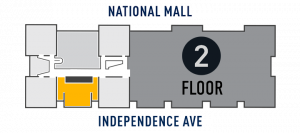Prior to the flights of astronauts in Project Mercury, the first U.S. human spaceflight program, chimpanzees were launched to better understand the effects of acceleration and weightlessness on the human body. Instead of a spacesuit, these chimps had a pressurized capsule that allowed them to breathe in case of a failure of spacecraft cabin pressure. The chimp was strapped into a couch inside the capsule and had to operate a system of levers and lights to test its reactions to flight. It was rewarded with banana pellets or a drink of water, or punished with mild electrical shocks, for taking the right or wrong actions.
This primate capsule was used during the Mercury program, but it is not known whether it was on one of the two 1961 chimpanzee spaceflights. The NASA Manned Spacecraft Center in Houston, now Johnson Space Center, transferred it to the Smithsonian in 1971.
Display Status
This object is on display in Destination Moon at the National Air and Space Museum in Washington, DC.

Object Details
Country of Origin
United States of America
Type
SPACECRAFT-Crewed-Test Vehicles
Manufacturer
McDonnell Aircraft Corp.
Dimensions
Overall: 94 × 47 × 38.7cm, 22.7kg (37 × 18 1/2 × 15 1/4 in., 50lb.)
Materials
Fiberglass
Paint
Plexiglas
Steel
Aluminum
Rubber
Synthetic Fabric
Lead
Plastic
Copper
Adhesive
Inventory Number
A19721176000
Credit Line
Transferred from the National Aeronautics and Space Administration
Data Source
National Air and Space Museum
Restrictions & Rights
Usage conditions apply
For more information, visit the Smithsonians Terms of Use.